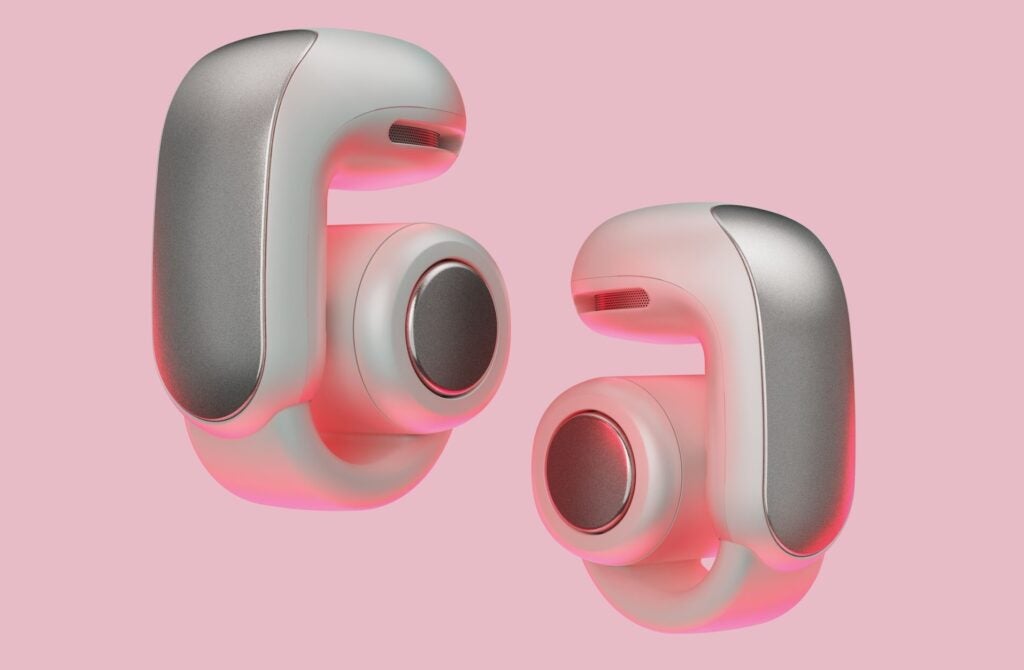
OPINION: With the official unveiling of the Bose Ultra Open Earbuds, it feels as if we’ve crossed some sort of threshold and entered a new space within the headphone market – actual wearable audio.
Now, everywhere you look, there’s an encroachment of wearable technology, but it’s rather hard to define and understand the lexicon behind it. I was talking to someone about this recently because the simplest definition would probably cover every headphone ever made. After all, headphones are wearable, and they play audio.
A more precise definition of wearable audio seems to be about reducing the intrusive aspect of a headphones’ design, of meshing the audio you hear with the environment around you. That sounds like a contradiction to me – I don’t want to always be aware of everything around me, and enjoying music comes from being fully immersed in it without distraction. After the launch of the original AirPods however, this is definitely something that people want from their audio devices.
The number of people I’ve seen wearing bone conduction and air conduction headphones on the Underground (of all places) suggests they’re not bothered about being interrupted.
Open-air audio has been around for years, Bose has dabbled with it before in its SoundWear Companion speakers, as has Sony with its Neckband speakers; but the recent spate of launches has miniaturised the technology into something portable and discreet. The emphasis Bose and Huawei have placed on it is that wearable audio also has a attractive fashion element to it as well, and it’s that part of the wearable aspect that seems to be gaining momentum
The mooted Samsung Galaxy Ring along with the Oura rings have a nondescript design in that they look like any other type of ring, but the technology they pack means they’re convenient and have that ‘cool’ factor that brands are always searching for.
Aesthetic is an important part of wearable audio; the Ultra Open Earbuds are sleek and stylish, the Huawei FreeClip stands out with their glossy, bulbous appearance, while the Sony LinkBuds have the most the conventional look but even they are unlike any other true wireless. Wearable audio is fashionable – it stands out by appearing just like other ornaments we wear, a Trojan Horse full of tech in the most unassuming way.
I reckon it’s this aspect of wearable audio that will fuel its interest, and that much of this interest will come from a younger generation who aren’t taken in by traditional designs. As I have spoken about in a previous Sound & Vision column, younger generations place more of an emphasis on comfort than sound. Safety is another aspect I’ve heard mentioned in discussions, that people feel safer when they’re aware of what’s close by.
The obvious problem with wearable audio is that it doesn’t sound as good as headphones with a sealed design – but that didn’t stop the Apple AirPods from becoming popular all around the world. Wearable audio encourages, or is accepting of, a different mindset.


People who want these devices aren’t as interested in high quality sound, which is in opposition to the push for higher fidelity across the board. The Ultra Open Earbuds supports aptX Adaptive which to me sounds like overkill for a casual, mainstream audio product.
But again, the appeal of the design and awareness seems to trump all that. If there’s some sort of definition, it’s that wearable audio is meant to be comfortable, trendy but discreet, easy to use and offers awareness all the time.
It’s in stark contrast to headphones that have always suggested to other people that “I’m busy”. Wearable audio is meant to be inviting to others because they won’t realise it is a pair of headphones. It’s a conversation starter in a few ways.
Is it for me? I’m not sure but it could suit you. It remains to be seen as to whether wearable audio will truly take off, but at the same time, it does not look as if it’s going away.






